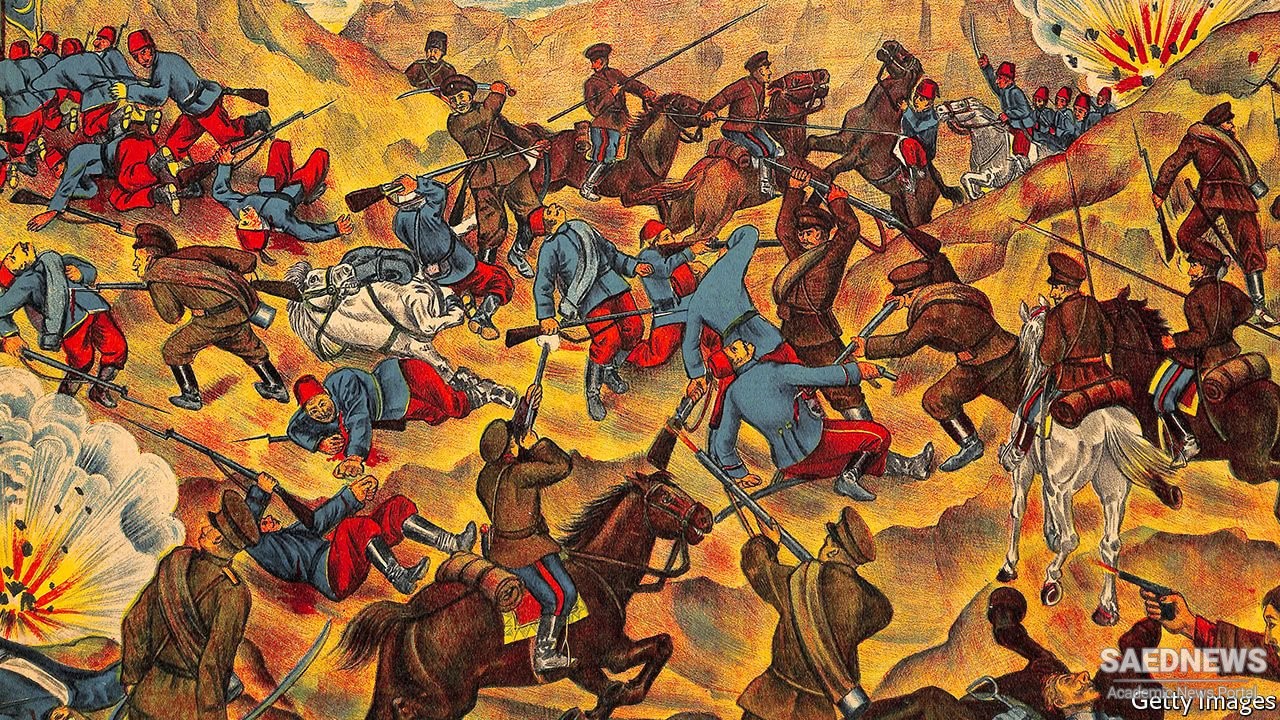Recognizing that partisan guerrilla warfare was wearing down the Russian occupiers of the Caspian region, Nader negotiated the 1732 Treaty of Rasht, in which Russia surrendered its claims to Astarabad (now called Gorgan) and the Gilan and Mazandaran regions. This freed the multinational Persian army to concentrate on the Ottomans.
With a larger army than he had ever commanded before and an unbroken string of victories behind him, an overconfi dent Na der discounted Ottoman defensive preparations. After some initial victories, Nader plundered the region around the important Ott oman city of Kirkuk to draw out the major garrison at Baghdad and avoid a long and costly siege. The Baghdad garrison stayed behind the city’s defenses, however. After leaving a small contingent to besiege Kirkuk, Na der moved south to blockade Baghdad.
By February 1733 Na der completed his encirclement of the city with his own wall, but he lacked the heavy cannon needed to breach Baghdad’s fortifi cations. His army sett led in to starve out the Ottomans while concurrently sending contingents out to capture Samarra, Najaf, Karbala, and other towns as far south as Al Basrah. By early July, the Ottomans opened negotiations to surrender the city, only to stop when word reached them that a relief force under Topal Osman Pasha, regarded as the Ott omans’ greatest soldier, was approaching the city.
Reluctant to stop the siege when he appeared to be on the verge of victory, Nader made the difficult decision to split his force for the looming battle. He left twelve thousand men to keep up the blockade and then marched north with more than seventy thousand troops to stop Topal Osman and his army of eighty thousand. Unlike the low- grade provincial forces, militia, and tribesmen that had been opposing Na der up to that point, Topal Osman was bringing some of the best Ottoman soldiers from the main army stationed at Istanbul along with sixty cannon.
In mid- July 1733, the two armies clashed in a savage back- and- forth battle near Samarra. Dense clouds of dust blowing into their lines and the lack of a nearby source of fresh water placed additional pressure on Na der’s forces. As the day wore on, Nader, who was actively engaged in the fighting, was thrown from his horse. Before he could remount, wavering troops, believing that their commander had been killed, panicked and could not be stopped from retreating. With no other choice, Nader ordered a general withdrawal, leaving behind his artillery, baggage, and as many as thirty thousand dead. When news of the Ott oman victory reached Baghdad, the city’s garrison sortied out and smashed the Persian detachment left to invest the city. This decisive defeat reversed all of Nader’s gains in Iraq and for a time reduced his army’s reputation. Nader was able to rally his remaining forces to hold off the enemy for the rest of the summer until reinforcements arrived and he could go back on the off ensive.
Na der needed to defeat the Turks to remove them as a strategic threat, but also to discourage his political opponents at home and free his army to suppress increasing unrest over taxes and conscription. In his rematch with Topal Osman at Kirkuk in November, Nader maneuvered his army into position to assault an Ott oman force of twelve thousand that had been sent to att ack him while he was despoiling the north. Once the two enemies were engaged, Topal Osman marched out of Kirkuk with another eighty-five thousand to ninety thousand men in support of the Ott oman column.
After a strong charge by the Persian center successfully broke through the Ottoman line, a flank attack by part of Nader’s cavalry threw Topal Osman’s forces into disarray. In the melee, Topal Osman was killed, and the enemy fled from the fi eld. Because he needed to attend to a revolt in Fars, Na der made an unfavorable treaty with the Ottomans in December 1733 that limited his victory to recovering only parts of Iraq. He then turned his army to suppress his restive subjects, who were an ongoing distration for his remaining years. In the meantime, the Ottoman sultan refused to recognize the treaty and began to assemble an army around Yerevan and Tifl is (modern T’bilisi, Georgia) that he kept on the defensive.


 Shah Abbas the Great and the Ottomans: How Modern Military Technologies Worked?
Shah Abbas the Great and the Ottomans: How Modern Military Technologies Worked?














































